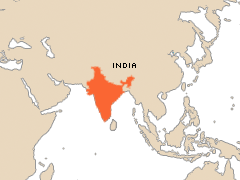
How do we know
Though a formal impact evaluation was not done, the World Bank’s Implementation Completion Report provides information on the major achievements of the Cataract Blindness project in India. Based on an estimated 3.5 million cataract surgeries each year, about 320,000 people were saved from blindness annually. Overall population prevalence of cataract blindness declined by 26 percent, from 1.5 percent at baseline to 1.1 percent, during the program period.Downloads
- Read the entire case study
(PDF | 114 K)
External Links
Health Condition: The leading cause of global blindness, cataract is present in more than half of all cases. Cataract is an age-related condition in which the lens of the eye becomes clouded, blurring vision. In 1998, it was estimated that some 20 million people were blind due to cataract, and at least 100 million eyes have very poor vision as a result of cataract. In India in the early 1990s, it was estimated that more than 80 percent of blind people, or more than 10 million individuals, suffered from bilateral cataract, and another 10 million individuals had cataract in one eye.
Intervention or Program: In 1994, recognizing both the tremendous problem of adult blindness in India, and the shortcomings in the existing cataract treatment program, the Cataract Blindness Control Program was formed in seven states in India where the need was most concentrated. The program consisted of introducing a new, more effective surgical technique; shifting from a strategy of providing treatment in mass camps to one in which fixed sites were used; partnering with Aravind Eye Hospital and other NGOs for delivery of services; and improving management and training at all levels.
Cost and Cost-Effectiveness: The total cost of the project was about US$136 million, with close to 90 percent coming from the Bank and the remainder from the Government of India. In some settings, costs were as low as $10 per cataract operation, due to the efficiencies of high patient volume and the local production of high-quality artificial lenses. Overall, the cost-effectiveness of surgery in the South Asia region has been estimated at about $60 per disability-adjusted life year.
Impact: A cumulative total of 15.35 million cataract operations were performed within the seven years of the program, which was successful in improving the quality of care. Surgeries using the recommended technique increased from 3 percent before 1994 to about 42 percent (cumulative) between 1999-2002. Based on an estimated 3.5 million cataract surgeries in India in 2000, 320,000 people were saved from blindness.

